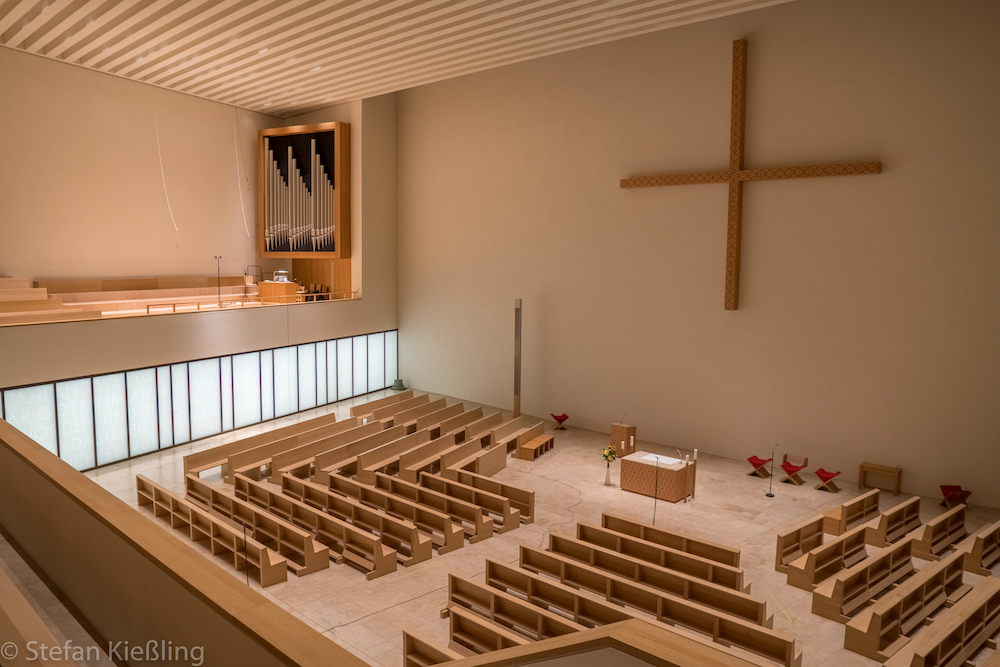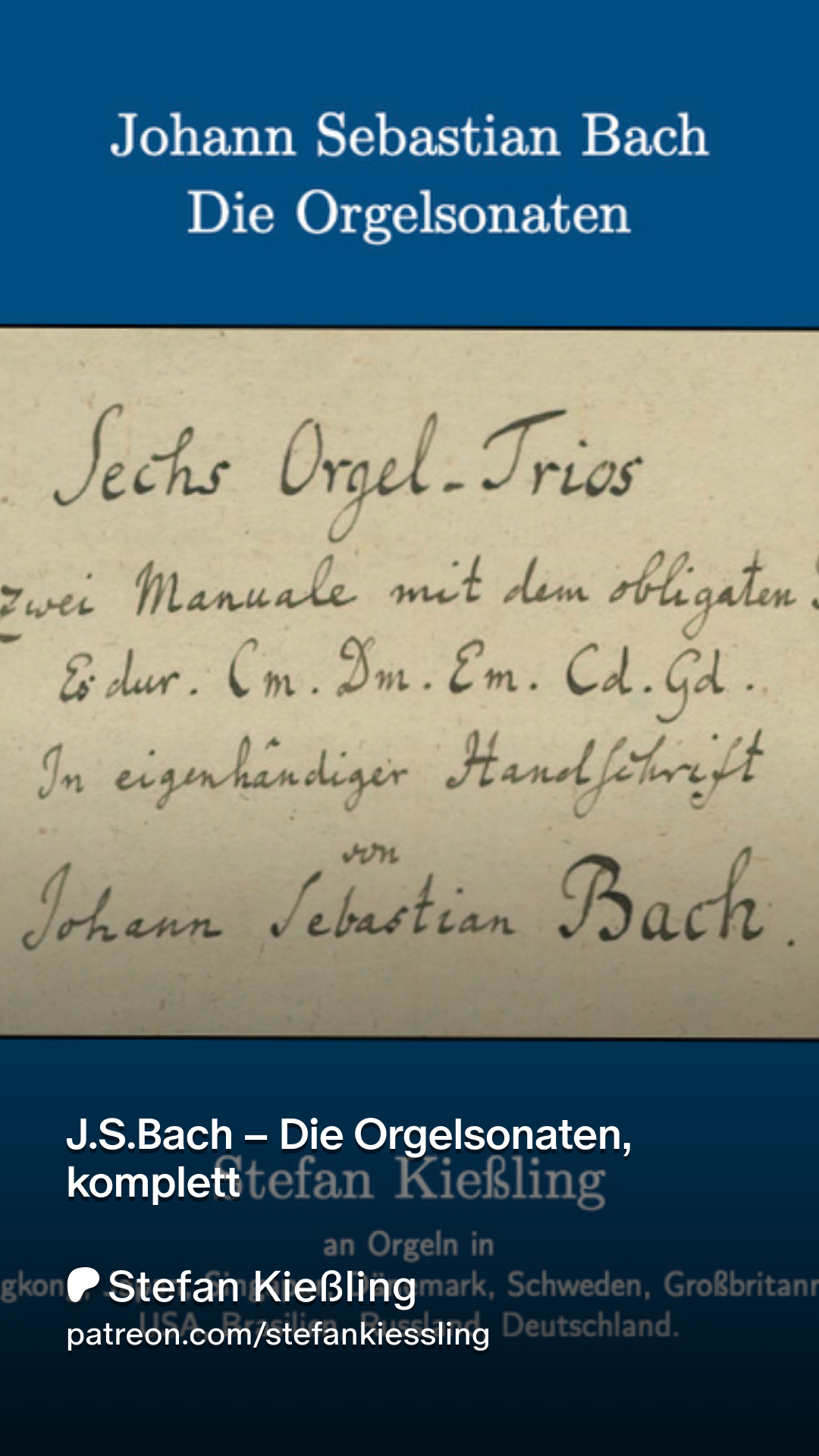Organ recording with 9 microphones
Performance, recording, calculation, programming by Stefan Kießling, 2022
Website tested with Safari 15 and Chrome 90 on macOS 12.5
Korla Awgust Kocor (1822-1904): Finalsatz des Oratoriums „Israelowa zrudoba a tróšt / Israels Leid und Trost“

St. Trinitatis Leipzig, Germany, is a very unique church, having the organ placed asymmetrically into the front left corner. Acoustically very tricky. Being player and recording artist in one person I did not find too much time to try out the best microphone positions, so I assembled a setup that gives me a lot of possibilities in post. I used:
- a small-AB setup on the gallery, in front of the organ with three pairs: Super-cardioids (ch. 1-2), omnis (3-4) and fig. of 8's facing outwards (5-6).
- a wide cardioid placed in the middle of that AB setup, a few centimeters shifted towards the organ (not to be seen in the picture), channel 7.
- a large-AB setup down in the nave with diffuse-field corrected omnis as room mics (ch. 8-9).
 The three pairs mixed result in virtual microphones with a very wide range of arbitrary patterns and angles. Depending on the virtual pattern the main AB setups captures already a lot of reverb or is relatively dry. One point to achieve was to avoid, that the listener hears reverb coming more from the right side than from the left side. That can be balanced by using more room mics, especially on the left channel, but the result should not be too reverberant to keep the music clear and transparent.
The three pairs mixed result in virtual microphones with a very wide range of arbitrary patterns and angles. Depending on the virtual pattern the main AB setups captures already a lot of reverb or is relatively dry. One point to achieve was to avoid, that the listener hears reverb coming more from the right side than from the left side. That can be balanced by using more room mics, especially on the left channel, but the result should not be too reverberant to keep the music clear and transparent.
You can mix and try out here by yourself. If your browser/your audio interface/your loudspeaker setup support surround sound, you can change the routing of the room mics to the surround speakers in the drop down list: Back Left and Back Right. The individual tracks are normalized by the mixer, which means, that the mixer behaves, as if all microphones have the same sensitivity and were recorded with the same preamp gain.
Resulting Polarpatterns of the small-AB configuration
Mixing those three microphones of each group results into a stereo sound that would be achieved with a pair of microphones of the angle and polar pattern shown here. Show frequency dependent patterns

Equipment
Affiliate-Links
Fig. of 8 microphone capsule: Schoeps MK 8
Super cardioid microphone capsule: Schoeps MK 41
Wide cardioid microphone capsule: Schoeps MK 21
Omnis with diffuse field grid: DPA 4006C
Microphone amplifier for the capsules: Schoeps CMC 1U
Ultra compact Microphone amplifier for the capsules: Schoeps CMC 1L
Omni microphone (capsule incl. amplifier): Sennheiser MKH 8020
plastic clips to clip two microphone bodies together: Rycote MS Stereo Clip
Mic preamp and converter: RME 12Mic
